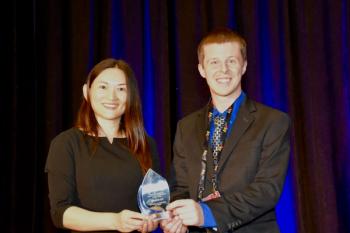
What Machine Learning Reveals in the Study of Pigments in Cultural Heritage
A recent review article explores the evolving landscape of pigment analysis in cultural heritage (CH).
Cultural heritage studies have benefitted from the use of spectroscopic techniques. In particular, spectroscopy has been used to analyze the pigments of old artifacts and dwellings (1,2). The insights driven from these analyses have enabled researchers to learn more about ancient cultures.
A recent review article published in Heritage explored the published research in this space. Astrid Harth from the City University of Hong Kong used topic modeling, a known unsupervised machine learning (ML) technique, to review 932 articles published over the last 24 years from 1999 to 2023 (3). Grouping the articles into ten specific topics, Harth was able to track several trends in cultural heritage analysis over the past three decades, offering valuable insights into where the field is heading in the future (3).
The topic modeling used in this study is known as latent Dirichlet allocation (LDA). The analysis revealed significant shifts in research focus driven by advancements in technology. Historically dominant topics, such as spectroscopic and microscopic studies of the stratigraphy of painted CH assets (T1) and X-ray-based techniques for conservation science and archaeometry (T5), have seen a gradual decline (3). These were prominent between 2008 and 2013, but they have since been eclipsed by emerging methods (3).
Spectral imaging techniques (T6) have been essential in enabling the detailed chemical mapping of painted surfaces. Another growing area is the technical study of pigments and painting methods employed by both historical and contemporary artists (T10) (3). These newer topics have more than doubled their share of scholarly attention, signaling a broader adoption of advanced imaging and data processing technologies (3).
One of the most important observations from this study was that although numerous scientific disciplines are involved in pigment analysis, there is still limited involvement from art historians and archaeologists. Although these disciplines offer critical historical and cultural contexts, the paper suggests that their underrepresentation could prevent the formulation of new research questions or the advancement of methodologies (3).
The inclusion of art conservators is particularly significant. Analytical campaigns are often conducted in conjunction with conservation treatments, yielding invaluable data about the materials and techniques used in CH assets. This integration has not only enhanced conservation practices but also provided archaeologists and art historians with rich datasets for contextual studies.
The ten topics identified through LDA modeling span a wide range of applications and techniques. For example, T4 and T6 focused on advancing analytical and imaging tools for inorganic pigments (3). T10 revolved around characterizing pigments and studying the methods of historical and contemporary artists (3). T1, T5, and T9 were focused on spectroscopic examinations to understand painting techniques, material conditions, and degradation processes (3). And finally, T8 was focused on restoration and preservation methods, with a focus on digital technologies (3).
As a result, Astrid Harth’s study shows how pigment analysis has evolved through several decades. Because of advancements in spectroscopic technology and techniques, previously inaccessible details in pigment analysis are now able to be uncovered. As the review article shows, imaging spectroscopy and advanced data processing methods have accelerated the growth in this field. By contextualizing the technical data, these fields can enrich our understanding of CH assets and drive new research directions.
By identifying trends and gaps, this study lays the groundwork for future research, ensuring that the stories embedded in CH assets are preserved and better understood for generations to come.
References
- Wetzel, W. New Spectroscopic Techniques Offer Breakthrough in Analyzing Ancient Chinese Wall Paintings. Spectroscopy. Available at:
https://www.spectroscopyonline.com/view/new-spectroscopic-techniques-offer-breakthrough-in-analyzing-ancient-chinese-wall-paintings (accessed 2024-12-17). - Workman, Jr., J. Raman Spectroscopy Transforms Cultural Heritage and Forensic Analysis. Spectroscopy. Available at:
https://www.spectroscopyonline.com/view/raman-spectroscopy-transforms-cultural-heritage-and-forensic-analysis (accessed 2024-12-17). - Harth, A. The Study of Pigments in Cultural Heritage: A Review Using Machine Learning. Heritage 2024, 7 (7), 3664–3695. DOI:
10.3390/heritage7070174
Newsletter
Get essential updates on the latest spectroscopy technologies, regulatory standards, and best practices—subscribe today to Spectroscopy.




